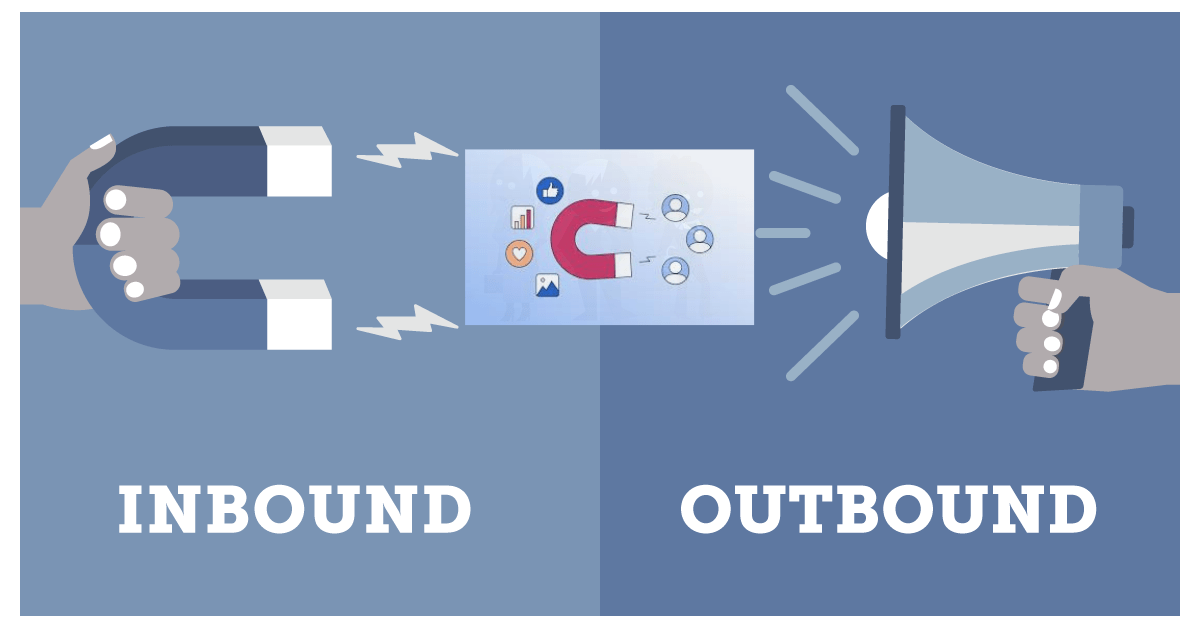Businesses depend on leads as one of the important aspects of promoting their sales. But, understanding the inbound and outbound strategies is critical for success. So what exactly do inbound and outbound leads entail, what examples are there, and which are better? Whether you’re a startup or a large company, knowing about inbound and outbound lead generation always gives you an edge.
What are Inbound Leads?
Inbound leads are organic and come through the customer visiting you. These leads come across your business through the content, search engine, or by word of mouth. They have an inherent predisposition to your product or service. For instance, we read a blog, go to your website, and leave a contact form — this is an inbound lead.
The key to generating inbound leads is attraction. Businesses produce useful information that reaches customers. This can include a blog, a social media post, or even an eBook. When they realize that value, they seek more information.
It creates a platform of building trust through continuity. It also places your business at the center of thought leadership. The leads generated are usually more refined. This makes them more likely to purchase products from the firm.
What are Outbound Leads?
Outbound leads come from direct contacts made to the customers. Companies directly contact its potential consumers via email, phone or through its advertisement. This method is known as outbound lead generation. The primary difference between inbound and outbound leads is that the outbound lead may not even be aware of your brand.
An example of an outbound lead is reaching a prospect with a cold email. You begin to market your product or service, directly communicating with audiences, without first warming them up. This will get you to a larger audience within the shortest time possible. Outreach lead generation is effective for new markets. It enables you to ‘feel the pulse’ of your message/offer.
Inbound Leads vs. Outbound Leads
Now that we understand both types, let’s look at inbound leads vs. outbound leads. Moreover, these two methods have their own advantages and disadvantages.
Leads generated with the help of inbound are backed up with better conversion ratios. These come from interested prospects. This means it becomes easy to lay the foundation for the relationship. Inbound marketing also has another advantage of being affordable in the long run. There are more and more leads generated by content without any further costs.
However, the inbound methods are slow to gather, or rather they are slow in building up steam. You may not even get results for several weeks or months of usage. This method is particularly appropriate for firms that have long-term growth vision and focus.
Outbound leads can quickly provide you with results. It can take only about five minutes to contact hundreds of prospects. The difference between inbound and outbound leads is most evident in timing. Outbound is useful whenever you require live leads.
However, inbound techniques normally retrieve a lower popularity than outbound methods. A lot of people get numerous spam messages to their inboxes and Spam phone calls. Trying to get noticed in a pile of emails is difficult. You might have to remind your audience several times before they respond to your call to action.
Examples of Inbound Lead Generation
Inbound lead generation involves tactics like content marketing and SEO. Here are some common examples:
- Blogging: Write informative blog posts to rank high on Google.
- Social Media: Share engaging content on social platforms.
- SEO: Optimize your website to attract organic traffic.
- Ebooks & Guides: Offer valuable content in exchange for contact details.
These strategies attract prospects searching for solutions. They turn visitors into leads who are ready to engage.
Examples of Outbound Lead Generation
Outbound lead generation uses direct methods to reach out. Here are some common examples:
- Cold Emails: Send emails to potential customers with personalized messages. Cold Email outreach is one of the best methods to get a lead with the help of an email outreach platform.
- Cold Calls: Reach out to prospects by phone to introduce your service.
- Paid Ads: Use online ads to reach potential clients on social platforms.
- Direct Mail: Send physical mail to targeted prospects.
These outbound lead-generation methods allow businesses to reach a broader audience. They can introduce their product to people who may not know them yet.
Choosing the Right Approach for Your Business
A balanced approach to lead generation is often best. Inbound marketing, therefore, establishes long-client relationships with the leads. Outbound methods can be used to provide an instant lift when it is required most.
If it’s your aim to establish a consistent generation of leads then inbound is the way to go. It focuses on content that has value today, tomorrow, and the day after. Using SEO and social media helps you extend your reach. This will put in place a predictable stream of quality prospects.
When starting to expand services and products to new markets, businesses may need to use outbound methods. Outbound strategies are for fast market research using the four Ps of the marketing mix namely Placement, Promotion, Price as well as Publicity.
Conclusion: Find Success with a Combined Strategy
A lead generation strategy would not be complete without knowing the difference between inbound and outbound leads. Inbound marketing techniques pick clients who should stick with the business for a long time. Outbound methods should be employed now to achieve rapid growth and penetrate the market deeper.
Discover how SendEngage.io can elevate your strategy. SendEngage is the best outbound lead generation tool that helps you attract the right leads! Visit SendEngage.io to learn more.

